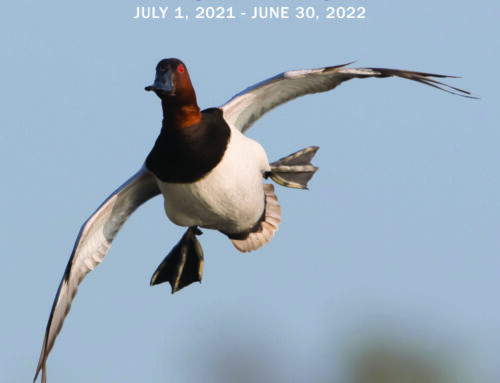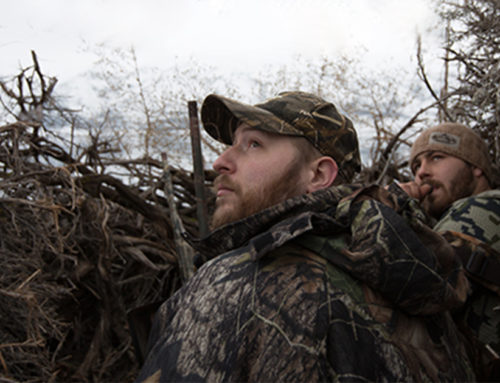Delta Waterfowl Adds 400 Hen Houses in Alberta
Nest structures boost mallard production by deterring predators from easily reaching hens and their eggs

For immediate release
February 27, 2024
Phil Eriksson eased his pickup to a snowy halt next to the cattails on a small, frozen wetland.
A Hen House delivery specialist for Delta Waterfowl, Eriksson gathered the necessary hardware from his truck bed—a pre-rolled wire tube filled with flax, a cradle to hold it, and a stout metal post—before heading out onto the ice-covered pothole. Next, he grabbed an ice auger and a post pounder. And pliers to cut and twist wire.

Within minutes, Eriksson, a physically fit runner and cross-country skier from Camrose, Alberta, drilled through the ice and mud, drove the post deep into the muck, attached the cradle and nest tube, and then adjusted the nesting material. Just like that, another Hen House is ready for a mallard hen to occupy once the ice melts and the ducks return to breed.
Eriksson is installing 100 new Hen Houses in his area, as part of 400 new structures Delta Waterfowl is adding in the province this winter to boost duck production. With the additions, Delta will have about 1,800 Hen Houses in Alberta in key waterfowl breeding areas near Vegreville, Cardston, Camrose, Buffalo Lake, and Peace River.
“The Parklands habitat of Alberta is well suited for Hen Houses because it has a lot of small permanent and semi-permanent wetlands that attract mallards in the spring,” said Matt Chouinard, waterfowl programs director for Delta Waterfowl. “Research has shown a history of poor nest success in some areas of the Parklands, so Hen Houses can really help produce more mallards there.”
Hen Houses are placed strategically, focusing on areas of the breeding grounds that attract high densities of nesting ducks but where grassland nesting cover is relatively scarce. In some intensely farmed areas of the prairie pothole region, predators take a heavy toll on duck nests. Hen Houses put nesting hens and their eggs out of reach of would-be nest raiders, giving the ducks a much better chance to hatch a nest. Research has shown that mallard hens using a Hen House are up to 12 times more likely to hatch a nest than hens that nest on the ground in nearby grass.
“We’ve found strong usage rates in the Hen Houses we have in Alberta, so they’re working well there,” Chouinard said.
Waterfowl band return data reveals that most of the mallards taken by Alberta hunters were hatched locally.
“We’re pleased that Delta Waterfowl continues to expand the organization’s cost-effective Hen House Program to increase duck production in Alberta,” said Todd Loewen, minister of Forestry and Parks. “Delta’s work greatly enhances our wildlife resources and benefits Alberta’s duck hunters, as well as those farther down the flyway.”
Duck production has always been at the forefront of Delta Waterfowl’s mission. In July 2022, Delta announced the Million Duck Campaign, a $250 million fundraising effort with a goal of adding 1 million ducks to the fall flight every year. At full maturity, the Million Duck Campaign will result in more than 110,000 Hen Houses welcoming hen mallards across the breeding grounds of North America every spring.
Under the MDC plan, Delta would have 35,160 Hen Houses in Alberta wetlands, which would dramatically increase the number of mallards hatching in the province.
“Alberta is very important for ducks and duck hunters,” Chouinard said. “We want to produce more ducks there—especially mallards, the most popular duck in North America.”
Delta Waterfowl is The Duck Hunters Organization, a leading conservation group working to produce ducks and secure the future of waterfowl hunting in North America. Visit deltawaterfowl.org.
For more information about Delta’s innovative Hen House Program, contact Matt Chouinard at mchouinard@deltawaterfowl.org or (701) 222-8857 ext. 5209.






Leave A Comment